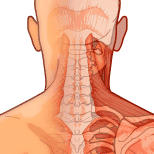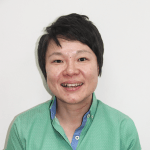Neck Injuries
Neck Pain & Injury Treatment

Neck pain is very common and can be very disabling, as well as painful. In the vast majority of neck patients at PhysioActive, the pain is caused by acute inflammation or tight muscles. Sometimes the pain is localized in the neck, but it may also refer to the thoracic spine or shoulder. If the nerve is irritated, the pain may even radiate into the arm or fingers. Common causes include poor posture, joint degeneration, muscular weakness, stress, and general inactivity
Common Neck Injuries:
-
Acute neck pain
Acute neck pain is defined as nonspecific or mechanical pain present for up to six weeks. It has no serious underlying pathology or nerve injury and is often unrelated to a specific activity. 98% of all neck patients are related to nonspecific acute neck pain. It is the most prevalent orthopedic injury among our modern society and 80% of all people experience a significant episode of neck pain at some point of their lives. Rest, pain killers and physiotherapy, including massage, stretching, strengthening exercises and posture training is the choice of treatment for returning to a pain free life and to prevent acute neck pain from reoccurrence.
-
Disc herniation
A herniated disc, also known as a slipped disc or ruptured disc, is a common condition in where one of the cushion-like discs between the vertebrae moves out of position and presses on the nerves of the spinal cord. A herniated disc can irritate these nerves and sometimes result in pain, numbness, or weakness in the arm or fingers.
Most people who have a herniated disc don’t need any surgery. In this case conservative treatment including rest, medication and physiotherapy will help to fully recover. -
Cervical spondylosis
Cervical spondylosis is a general term for age-related wear and tear affecting the disc and joints in your neck. In most cases, conservative treatment with physiotherapy can significantly reduce the pain and allow patients to live a relatively normal life without many restrictions. Only in very severe cases the choice of treatment might be surgery.
-
Whiplash
Whiplash is an injury that occurs after sudden extreme movements to the head, like in a car accident. This extreme motion may damage soft tissues including muscles, ligaments and capsule. Compensatory muscle activity to protect the head may cause further damage. Pain can be localized in the neck, but often radiates into the head or further down the spine. Most people recover from whiplash with physiotherapy in just a few weeks, but without treatment some people may develop chronic pain after a whiplash injury.
-
Spinal stenosis
Spinal stenosis refers to narrowing of the spinal canal and is most commonly caused by degeneration of the discs between the vertebrae. The result is compression of the nerve leading to pins & needles sensation in the arms and fingers. Mild to moderate spinal stenosis is treated with Physiotherapy to relieve the nerve irritation. Posture training and muscle strengthening play an important role to support the neck. However, when symptoms are severe and persistent, surgical resection of the tissue that is impinging the nerve may be necessary.
-
Fracture of the vertebra
Spinal stenosis refers to narrowing of the spinal canal and is most commonly caused by degeneration of the discs between the vertebrae. The result is compression of the nerve leading to pins & needles sensation in the arms and fingers. Mild to moderate spinal stenosis is treated with Physiotherapy to relieve the nerve irritation. Posture training and muscle strengthening play an important role to support the neck. However, when symptoms are severe and persistent, surgical resection of the tissue that is impinging the nerve may be necessary.
-
Tension headache
Tension headaches are the most common type of headaches among adults. They are commonly referred to as stress headaches. An acute episodic tension headache may be described as a mild to moderate constant band-like pain, tightness, or pressure around the forehead or back of the head and neck. Some patients develop chronic tension headaches which are much more frequent and the pain is usually throbbing and affects the front, top and side of the head. In some people, tension headaches are caused by tightened muscles in the back of the neck and scalp. Common causes for tightened muscles are inadequate rest, poor posture, stress, depression, anxiety, fatigue and overexertion. In other people the cause remains unknown. Physiotherapy can help by aiming at eliminating the cause of the pain.



